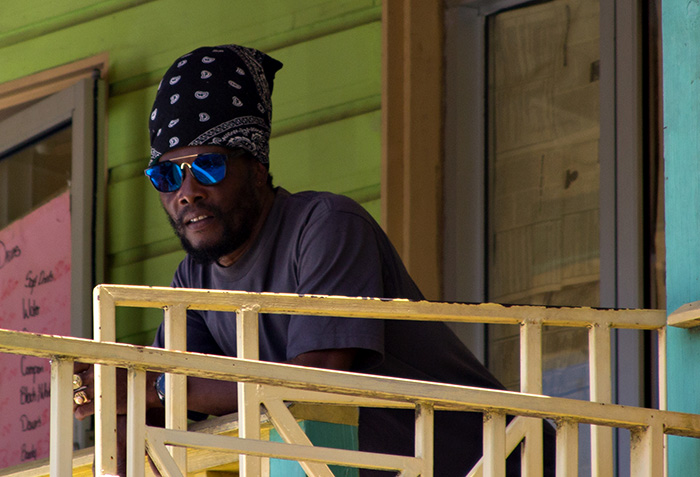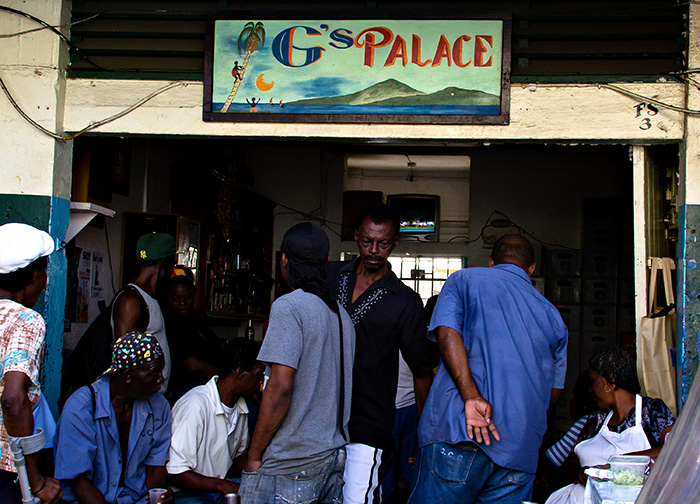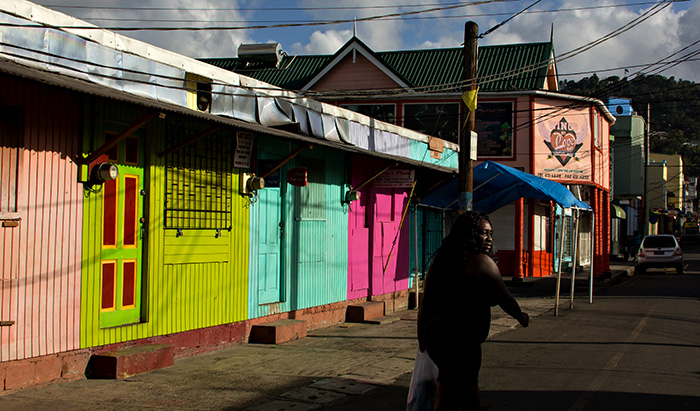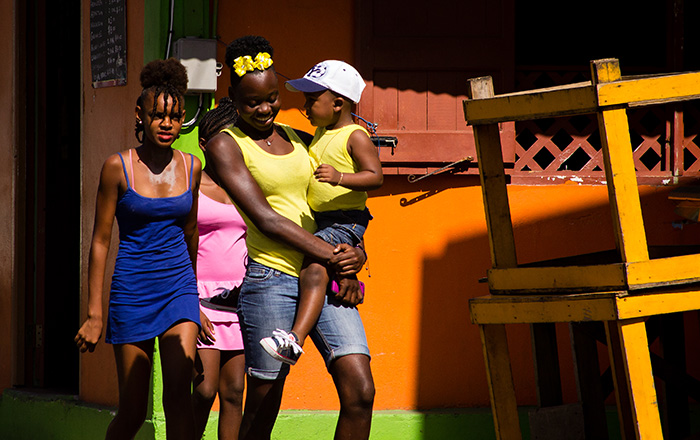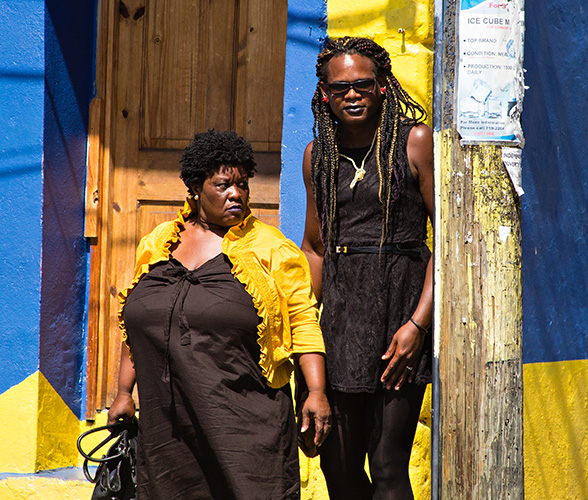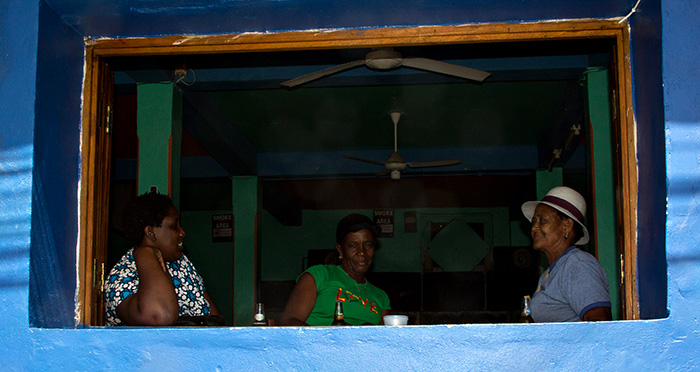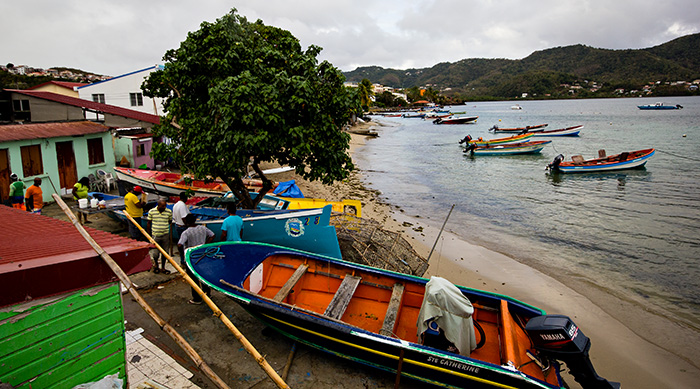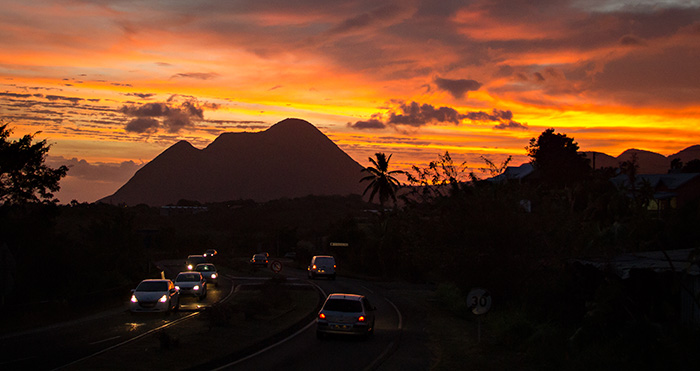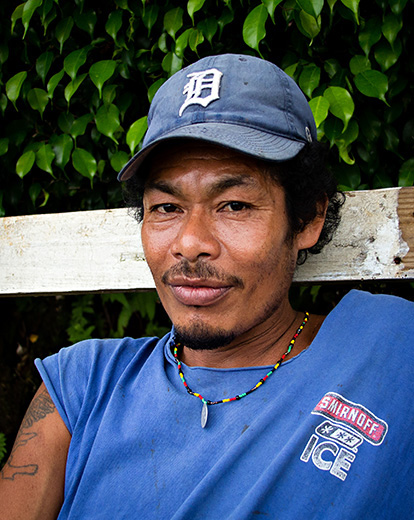Hello everyone! Second part of the small trip to the “Southern Windward Islands” of the Lesser Antilles. This time I will tell of Saint Lucia, Martinique and Dominica.
Map of the Caribbean Sea (from www.arcgis.com)
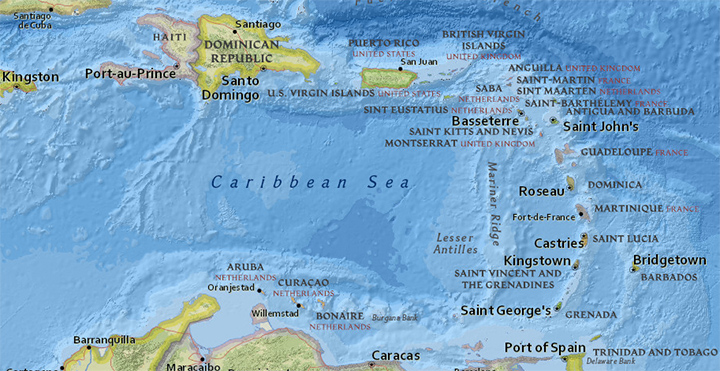 The transfers between the islands were often uncomfortable. When there were no ferries, the airline LIAT managed each time to accumulate hours and hours of late for stretches where they had essentially just to take off and land.
The transfers between the islands were often uncomfortable. When there were no ferries, the airline LIAT managed each time to accumulate hours and hours of late for stretches where they had essentially just to take off and land.
Even worse, however, were the transfers by sea, with the catastrophic “Express Des Iles” which stole also 69 euro from my account with a fictitious transaction! When I made them notice it, they said that it is evident that there was a mistake but unfortunately they can not refund me because the purchased ticket is not refundable. Right, they made an unauthorized transaction for a non-refundable ticket, so following the strict logic, they can not refund it. Since now I’m too far for proceeding with simple and resolving acts of vandalism, in the next days I will sue them, as a good civil citizen.
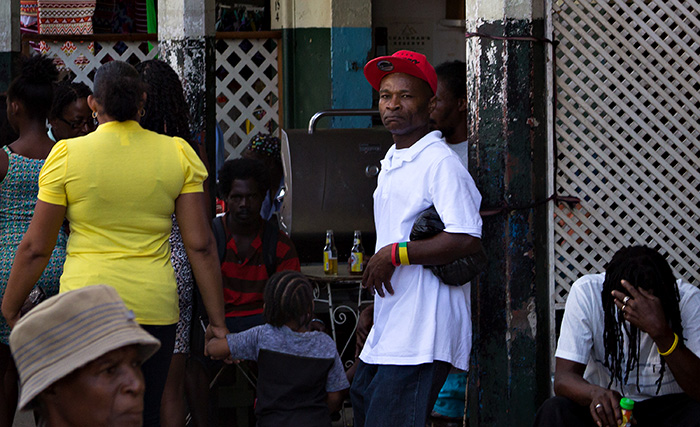
In Saint Lucia or “Hewanorra” in the language of the Kalinago, “The land where iguana is found”. It is the place where I felt more the “Caribbean spirit”, among loud music of small bars with people getting drunk drinking rum.
In the ’500 and’ 600 it was primarily a refuge for pirates and smugglers. The first attempts at occupation by Europeans were rejected by the stubborn resistance of the Carib Indians.
In 1746 the French succeeded to settle down, after signing a peaceful agreement with the local population. Of course, here as elsewhere, the natives were punished for their naivety about the perfidy of European settlers and already few decades later were almost completely wiped out.
In the meanwhile the island bounced 14 times between France and Britain, until 1814 when it passed into the hands of the latter till the independence in 1979.
Nevertheless, French influence remained deeply felt and also the language is a kind of French dialect. Even more obvious is the African influence. It has about 180,000 inhabitants.
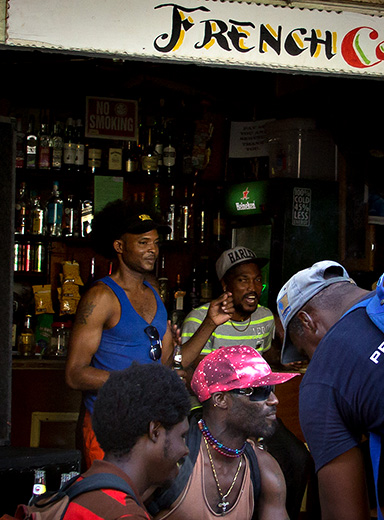 Bar in Castries, the capital of St.Lucia.
Bar in Castries, the capital of St.Lucia.
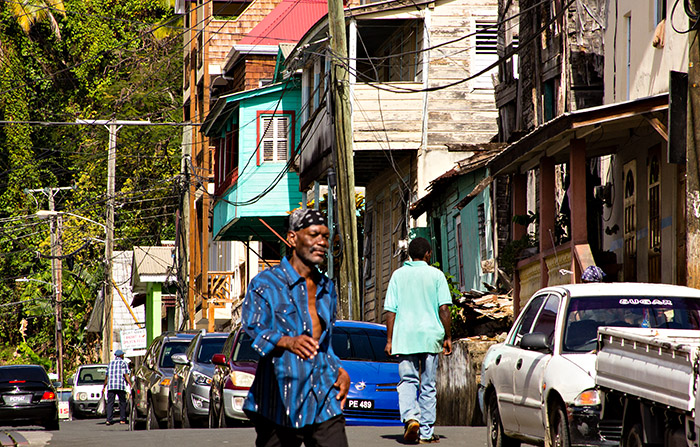 Among the typical wooden houses in Soufriere, who was the first French settlement.
Among the typical wooden houses in Soufriere, who was the first French settlement.
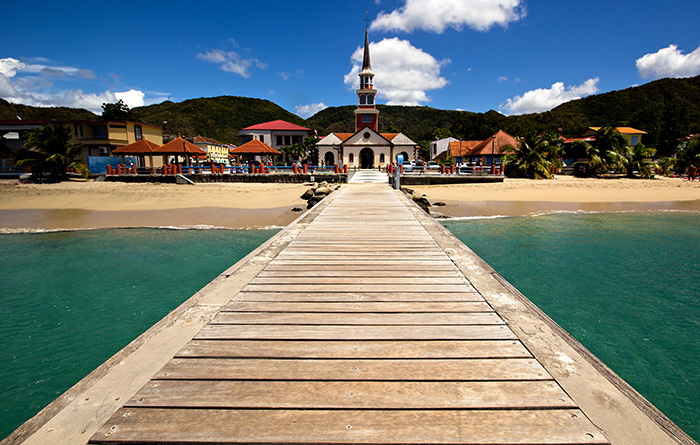 And here we are in Martinique, called by the Kalinago “Madinina”, “Land of flowers”, which actually is not a nation in itself but still part of France, as “overseas department” . So in a way it’s like being in Europe, and in fact the currency is Euro.
And here we are in Martinique, called by the Kalinago “Madinina”, “Land of flowers”, which actually is not a nation in itself but still part of France, as “overseas department” . So in a way it’s like being in Europe, and in fact the currency is Euro.
Also this island was disputed between France and Great Britain (and may God curse the both! – well, this one is not much an impartial historian sentence) and also here the local population was wiped out or enslaved, before other slaves were brought from Africa.
In all the islands I met great hospitality but I have to give a place of honor to Martinique: when I arrived, wandering with the backpack under the sun in the forlorn search of my rented apartment, I asked a gentleman at the window if he knew the address. He left the house and took me in his car for searching the place. The next day a neighbor nice woman took me to the near village to look for a place to rent a car, and the last day her husband, former national football striker of Martinique, gave me a ride to the capital to take the ferry. Really very kind.
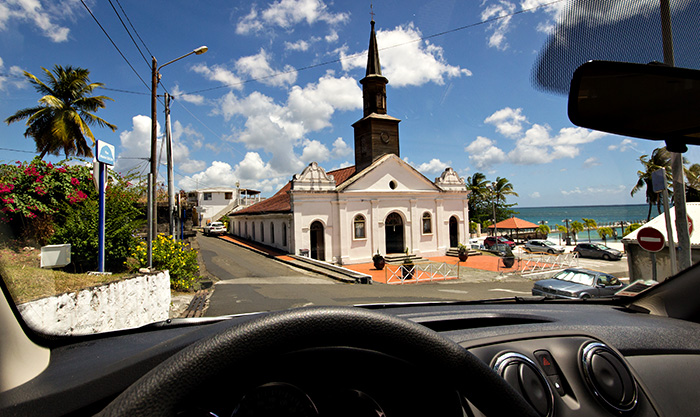 As I said, in Martinique I rented a car because it is too complicated to moving around using public transport. But apart from the need it is really worth for the pretty streets passing trough small villages, climbing the hills in the forest and running along the blue sea.
As I said, in Martinique I rented a car because it is too complicated to moving around using public transport. But apart from the need it is really worth for the pretty streets passing trough small villages, climbing the hills in the forest and running along the blue sea.
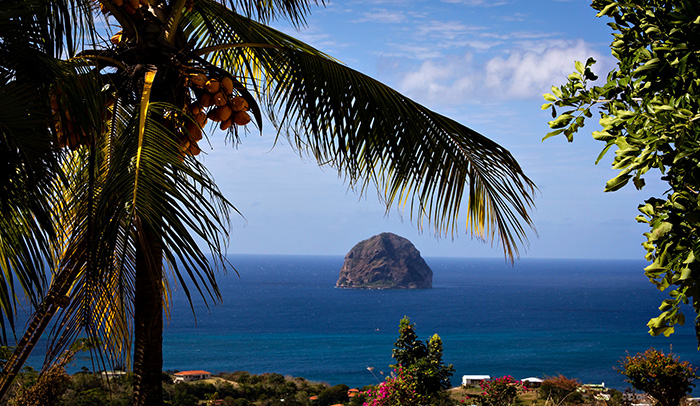 My apartment had a view on the spectacular “Diamant”, a rock-island 175 meters high. During my trip I used for the first time AirBnb, and it was always good.
My apartment had a view on the spectacular “Diamant”, a rock-island 175 meters high. During my trip I used for the first time AirBnb, and it was always good.
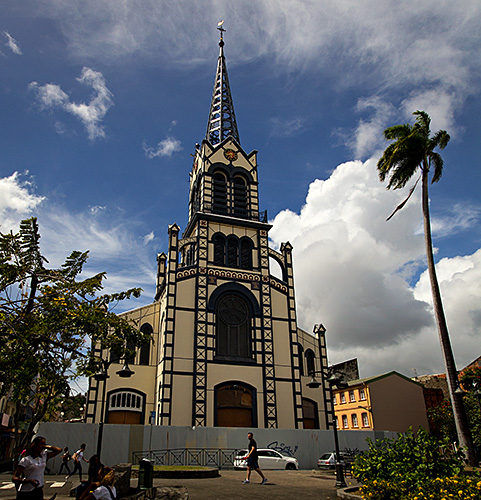 St. Louis Cathedral, in the capital Fort-de-France.
St. Louis Cathedral, in the capital Fort-de-France.
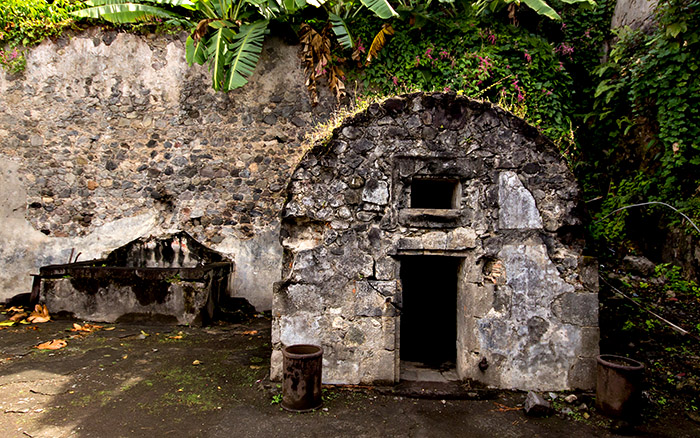 In St.Pierre, first French settlement and former capital of Martinique. It was the most cosmopolitan city of the Caribbean in the nineteenth century, dubbed the “Paris of the Caribbean”. Everything disappeared in a few minutes on 8 March 1902, for the eruption of the volcano Mount Pelee, whose growing activities of the previous months had been considered not dangerous by the authorities.
In St.Pierre, first French settlement and former capital of Martinique. It was the most cosmopolitan city of the Caribbean in the nineteenth century, dubbed the “Paris of the Caribbean”. Everything disappeared in a few minutes on 8 March 1902, for the eruption of the volcano Mount Pelee, whose growing activities of the previous months had been considered not dangerous by the authorities.
On about 30,000 people only 3 survived. One of them, Cyparis, saved his life because was under arrest for drunkenness inside that solitary cell with thick walls and few ventilation.
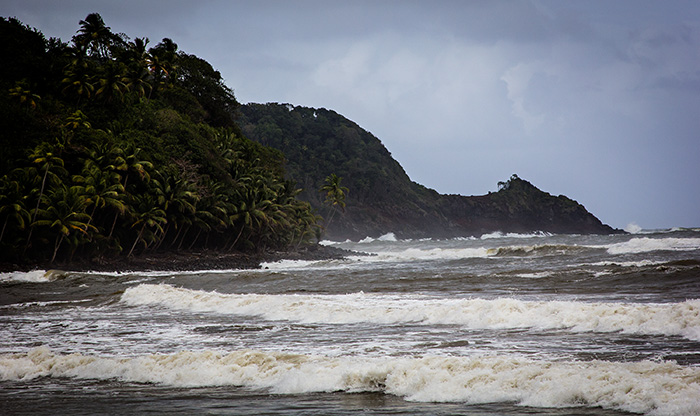 And finally, Dominica, the most wild and less touristy of the islands visited. The original name is “Waitukubuli”, which means “Tall is Her body”, and in fact is the one with the highest mountains. Unlike the other islands there are very few beaches, but is covered for more than three quarters of a wonderful dense forest, in which flow 365 rivers, one for every day of the year.
And finally, Dominica, the most wild and less touristy of the islands visited. The original name is “Waitukubuli”, which means “Tall is Her body”, and in fact is the one with the highest mountains. Unlike the other islands there are very few beaches, but is covered for more than three quarters of a wonderful dense forest, in which flow 365 rivers, one for every day of the year.
Again, France and Britain fought over the possession with battles, wars and treaties. At the end prevailed the United Kingdom, till the independence in 1978.
For its dense forest was one of the favorite places of runaway slaves, known as “Maroons”, who formed inland communities and fought often with guerrilla actions the British who were trying to recapture them. But at the end, in 1814, the British managed to prevail and all the Maroon leaders were executed.
As for the local population, also here fought a fierce resistance, but at least, unlike the rest of the Caribbean, they survived to this day. About 3000 direct descendants of Caribs, or Kalinago in their language, live in a territory of the northeast. It is the only existing community of Caribs.
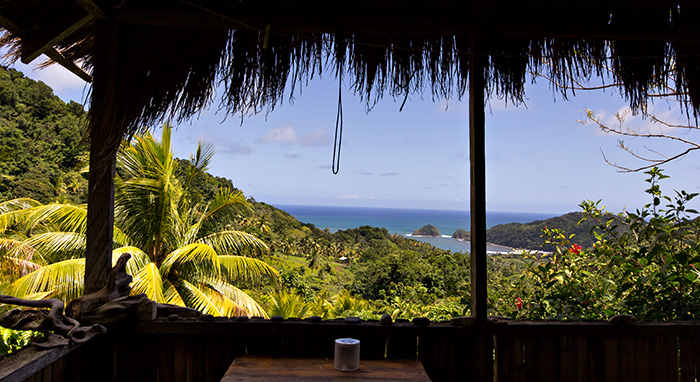 In Dominica I was a little unlucky. In the last two days I could not walk for an inflamed foot, so I was not able to visit some places. But at least the place where I stayed was amazing: an hut in the middle of the forest! In the night I was surrounded by a concert of mysterious animal calls.
In Dominica I was a little unlucky. In the last two days I could not walk for an inflamed foot, so I was not able to visit some places. But at least the place where I stayed was amazing: an hut in the middle of the forest! In the night I was surrounded by a concert of mysterious animal calls.
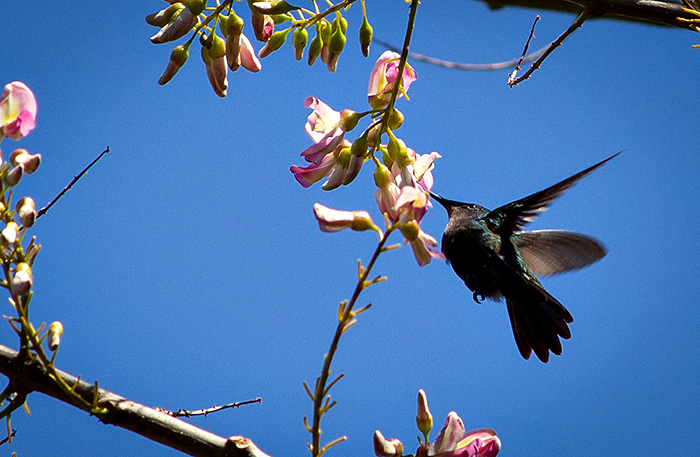 There are many species of birds, especially small, such as Hummingbird.
There are many species of birds, especially small, such as Hummingbird.
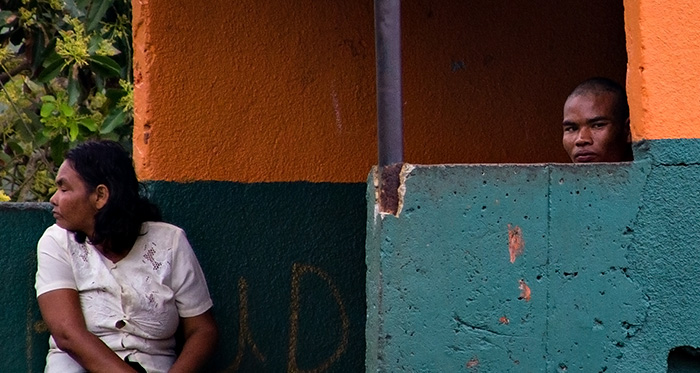 In the Kalinago territory, home to the last direct descendants of the natives of the Antilles.
In the Kalinago territory, home to the last direct descendants of the natives of the Antilles.
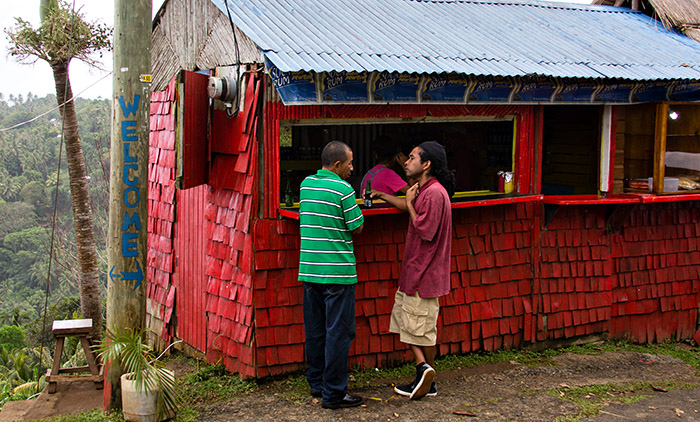 A bar in the Kalinago reserve. The territory is about 15 square kilometers and, as I said, there live about 3000 people.
A bar in the Kalinago reserve. The territory is about 15 square kilometers and, as I said, there live about 3000 people.
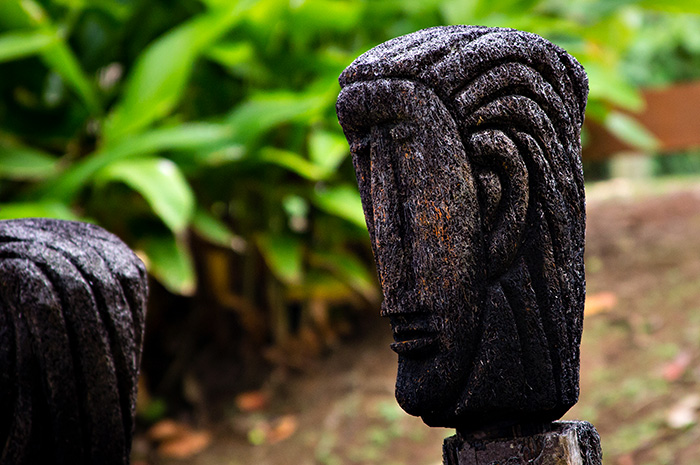 A wooden sculpture. It represents one of the former chief of the Kalinago community.
A wooden sculpture. It represents one of the former chief of the Kalinago community.
Well, end of the second part. Thanks to me now you are a bit more cultured and aesthetically satisfied. Ah, if you see on the right, there is an option for offering me a beer ![]() Don’t be shy! Don’t be.
Don’t be shy! Don’t be.






















































